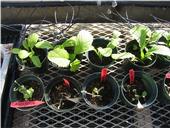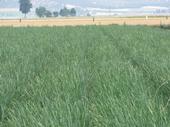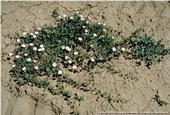- Author: Brad Hanson
I'm sure more information will be available over the next few day from news outlets and online sources...
- Posted By: Gale Perez
- Written by: Posted by David Low | WeedsNews2801 | January 22, 2012 | 11:15 PM
Abstract: Organic mulches could be a part of a wide strategy of integrated weed management in vegetable production systems. A 2-year field experiment was carried out in Central Italy with the aim of assessing the effect of grass and legume mulches, coming from winter cover crops, combined with herbicide or mechanical hoeing on weed control, on weed community (density and aboveground biomass of each species), and yield of a pepper crop. Hairy vetch (Vicia villosa Roth), oat (Avena sativa L.) and their mixture were sown in early autumn and suppressed in May. The cover crop aboveground biomass was cut and arranged in strips which were used as beds for pepper seedlings transplanted in paired rows. A conventional treatment...
- Posted By: Brad Hanson
- Written by: Tom Lanini, UC Cooperative Extension Weed Ecologist

Todays post was written by Tom Lanini summarizing some recent work on organic herbicides. This article is also available in the "Topics in Subtropics" newsletter from the Tulare County Cooperative Extension office. http://cetulare.ucdavis.edu/newsletters/Topics_In_Subtropics39737.pdf
Organic Herbicides - Do They Work?
In recent years, several organic herbicide products have appeared on the market. These include Weed Pharm (20% acetic acid), C-Cide (5% citric acid), GreenMatch (55% d-limonene), Matratec (50%...
- Author: Rob Wilson

Part of my job as the Director/Farm Advisor at the Intermountain Research and Extension Center involves overseeing weed management programs for a variety of crops and non-cropland at the Center. Over the last month, I’ve observed the outcome of these programs as many of the crops are nearing harvest. This spring I would have given myself an “A” grade for weed control. We treated crop fields with a combination of control methods and made an aggressive push to control weeds along roads, ditches, and field borders. Unfortunately, as time goes on I think I need to downgrade my performance to a “B” because some fields and roadsides now have quite a few weeds.
In reviewing field records, one factor was a common denominator at...
- Posted By: John A Roncoroni
- Written by: John Roncoroni

Field Bindweed (Convolvulus arvensis)
The late spring rains that fell in Northern California seemed to benefit some plants more than others. One weed that appears to be doing very well this year is Field bindweed. Field bindweed (Convolvulus arvensis), is a perennial weed that spreads by seed, creeping roots and rhizomes. You may call it morningglory or wire weed. It has arrow-shaped leaves and white to pink trumpet-shaped flowers and can grow spread along the ground from early spring until late fall. Bindweed’s creeping roots can penetrate the soil to more than 10 feet and send up vertical shoots that look much like seedlings, but unlike seedlings, are part of a much larger plant. Studies...


